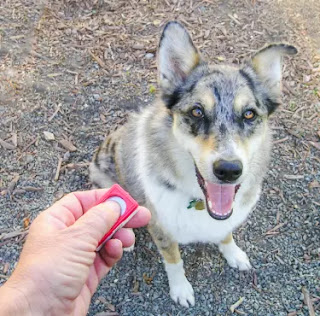Proper dog training is essential for a happy and healthy relationship between you and your furry companion. It not only helps with obedience and behavior issues but also provides mental stimulation and strengthens the bond between you and your dog. In this article, we will discuss 7 proven methods for effective dog training. These methods include Positive Reinforcement, Consistency, Clicker Training, Dog Training Vest, Socialization, Shaping, Luring, and other techniques that will help you train your dog effectively.
1. Positive Reinforcement
Positive reinforcement is a method of dog training that emphasizes rewarding good behavior. When your dog performs a desired behavior, you give them a reward, such as a treat or praise. This strengthens the behavior and prompts your dog to exhibit it again in the future. Examples of positive reinforcement techniques include giving your dog a treat for sitting, praising them for coming when called or giving them a belly rub for lying down on command. The benefits of using positive reinforcement in dog training include increased motivation, faster learning, and a positive relationship between you and your dog.
2. Consistency
Consistency is key when it comes to dog training. It is essential to use the same commands, rewards, and discipline every time you train your dog. This helps them to understand what is expected of them and makes it easier for them to learn. Tips for maintaining consistency in dog training include using the same command every time you ask your dog to perform a behavior, rewarding them for good behavior consistently, and correcting bad behavior consistently. The benefits of consistency in dog training include faster learning, fewer mistakes, and a more well-behaved dog.
3. Clicker Training
Clicker training is a method of dog training that uses a small hand-held device, called a clicker, to mark the precise moment your dog performs a desired behavior. When your dog performs the behavior, you click the clicker and immediately give them a treat. Over time, your dog learns to associate the click with the treat and the behavior. Examples of clicker training techniques include teaching your dog to sit, lie down, and rollover. The benefits of using clicker training in dog training include precise communication, faster learning, and increased motivation.
4. Dog Training Vest
A dog training vest is a special vest worn by your dog during training that helps to provide an added level of structure and focus for your dog. It can help to improve obedience and behavior, as well as provide a sense of security for your dog. Examples of dog training vest techniques include using the vest to train your dog to walk on a leash, to come when called, or to stay in a specific area. The benefits of using a dog training vest in dog training include improved focus, better obedience, and increased structure for your dog.
5. Socialization
Socialization is the process of introducing your dog to different people, animals, and environments. It is an essential part of dog training as it helps to prevent behavior problems, such as fearfulness, aggression, or shyness. Tips for socializing your dog include exposing them to different people and animals, taking them to different places, such as the park or pet store, and gradually increasing the level of difficulty of the situations they are exposed to. The benefits of socialization in dog training include a well-adjusted and well-behaved dog, fewer behavior problems, and increased confidence in your dog.
6. Shaping
Shaping is a method of dog training that involves reinforcing successive approximations of the desired behavior. This means that you reward your dog for getting closer and closer to the desired behavior, rather than waiting for them to perform the behavior perfectly. For example, if you want to train your dog to jump over an obstacle, you would start by rewarding them for looking at the obstacle, then for sniffing it, then for touching it with their paw, and so on, until they are jumping over it completely. Shaping allows for flexibility and creativity in training, as it allows for the dog to offer new behaviors during the training process. Examples of shaping techniques include training your dog to perform tricks, such as rolling over or playing dead, or training them to navigate agility courses. The benefits of using shaping in dog training include a more creative and flexible training process, faster learning, and increased motivation.
7. Luring
Luring is a method of dog training that involves using a treat or toy to guide the dog into the desired position or behavior. For example, if you want to train your dog to sit, you would hold a treat over its head and move it backward, causing the dog to sit in order to follow the treat. Once the dog sits, you would give them the treat as a reward. Luring is a great technique for teaching new behaviors and for teaching dogs who are not food motivated. Examples of luring techniques include teaching your dog to come when called, to sit, or to lie down. The benefits of using luring in dog training include clear communication and faster learning and it's a great tool for teaching new behaviors.
Conclusion
In conclusion, proper dog training is essential for a happy and healthy relationship between you and your furry companion. By using the 7 proven methods for effective dog training, you can train your dog effectively, and have a well-behaved and well-adjusted companion. Remember to be patient, consistent, and positive in your training, and to always keep your dog's safety in mind. With the right training methods, you can enjoy a lifetime of happy moments with your beloved dog.







